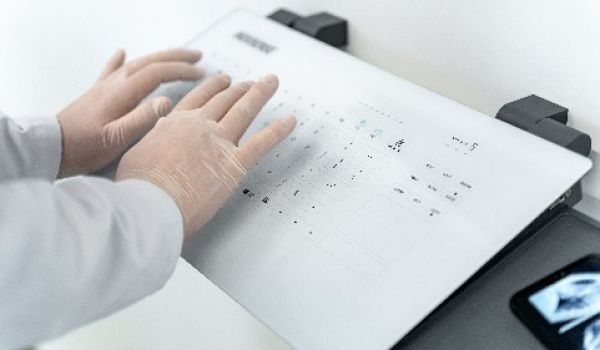
GLASS USER INTERFACES…REALLY SUCH A CRYSTAL CLEAR THING?
User interfaces made of glass or similar materials are in vogue and offer many design options.
My experience with operating panels made of glass
Operating panels made of glass or similar materials have been the latest trend for several years. I would like to share the experience that I have gained along the way and discuss it in this two-part series. There is a saying that “There are only virgins and victims with operating panels made of glass!” and you hear people say it every now and again. This blog series will reveal the limitations of using capacitive operating technologies, but also the opportunities and will, in the end, help ensure that you do not have to belong to either of the two groups – but to the winners

We need to talk!
Ever since I have been working on operating panels that are made of glass, customers continually confront me with the same questions and problems.
- When is it beneficial to use glass operating panels?
- What restrictions exist?
- How reliable are operations?
- What kind of design opportunities exist?
- Which cover materials are available?
- Which means of cleaning can be used?
- How thick or thin can the glass be?
It is often simpler to pay attention to particular requirements at the start of a project or clarify aspects that are still new and unknown. All developers are aware of this sentence … “But the designer said that …” – this is not directed against our designer colleagues – I am just using them as an example in this context. Experience has shown that comparing the requirements at an early stage and ensuring that both sides understand the “why” issue can simplify some things and make the ensuing course of the project less stressful.
I would first like to say that, even if we often talk about “glass operating surfaces”, other non-conductive cover materials, like plexiglass, polycarbonate or Corian®, can be used too, if their properties suit the product. It does not always have to be a capacitive operating element behind glass either; we also provide optical operating elements behind glass, which offer other benefits and often only provide the ideal results when a combination of materials is used.
I will specifically deal with the most popular questions from our customers on the issues of design, hygiene and environmental conditions for capacitive glass operating panels in the next part … keep your ears and eyes open!
A look back into the past
My first point of contact with operating technologies behind glass goes back to 2008, after Apple had brought the first iPhone on to the market one year earlier and thereby completely revolutionized capacitive data input technology.
My first experiments with the integrated circuits that were available at that time were very interesting, but there were still various problems related to their reliability and their acceptance when used as a full keyboard.
I was increasingly confronted by enquiries about capacitive operating elements, as developments in the field of capacitive operating technology progressed at great speed. My R&D colleagues and I were able to successfully complete some exciting projects in a short time, in conjunction with our customers. Increasingly, the focus was directed at the new opportunities that a glass operating panel offered.
By carefully sharing ideas with our customers, I was able to pick up many ideas and practical problems too; solving them eventually led to improvements in products and a significant growth in the level of expertise. That was an important learning process!
At some stage, the market was then ready for glass keyboards too. GETT introduced the CK series of the premium brand Cleankeys® to the market in 2014. The current fifth generation, Cleankeys® CK5 series, has reliable sensor technology, compact dimensions, a combined XXL touch/numeric keypad and what is particularly important – it meets the strict, new requirements in the EMC EN 60601-1-2 Edition 4, sometimes referred to as the EMC Edition 4.
As you can see, a constant learning process in terms of ongoing technological developments, customer requirements and even new fields of application is taking place here. However, this also means that we have gained practical and customer-oriented skills related to the topic of “operating panels made of glass” and “operating technologies behind glass” over a period of many years.
We are more than happy to pass on our expertise by offering customers solutions that not only work well in a laboratory.
I would now like to share a few of these experiences with you.

These topics could also interest you...

Capacitive glass operating panel

Industrial panel PC


